Motorola brought back the Razr in 2019 in an effort to reclaim a slice of the foldable pie, and for many nostalgic Motorola users and other flip-phone lovers, the idea has appeal. The flagship device fits in your pocket but opens up to offer a 6.2″ plastic OLED display and a handy external 2.7″ display. Late in 2020, the brand rolled out an updated version of the device, the Razr 5G, running on Android 10 instead of 9 and with an upgraded chipset as well — the Qualcomm Snapdragon 765G Adreno. The price for all that is steep — even more expensive than some top brands’ flagships.
In terms of audio, the newer version of the Razr offers one bottom-right side-firing speaker and four microphones. We put it through our rigorous DXOMARK audio testing protocol to see how it measures up.
Audio specifications include:
- One speaker, bottom-right side-firing
- Four microphones
- No jack
About DXOMARK Audio tests: For scoring and analysis in our smartphone audio reviews, DXOMARK engineers perform a variety of objective tests and undertake more than 20 hours of perceptual evaluation under controlled lab conditions. This article highlights the most important results of our testing. Note that we evaluate both Playback and Recording using only the device’s built-in hardware and default apps. (For more details about our Playback protocol, click here; for more details about our Recording protocol, click here.)
Test summary
Scoring
Sub-scores and attributes included in the calculations of the global score.
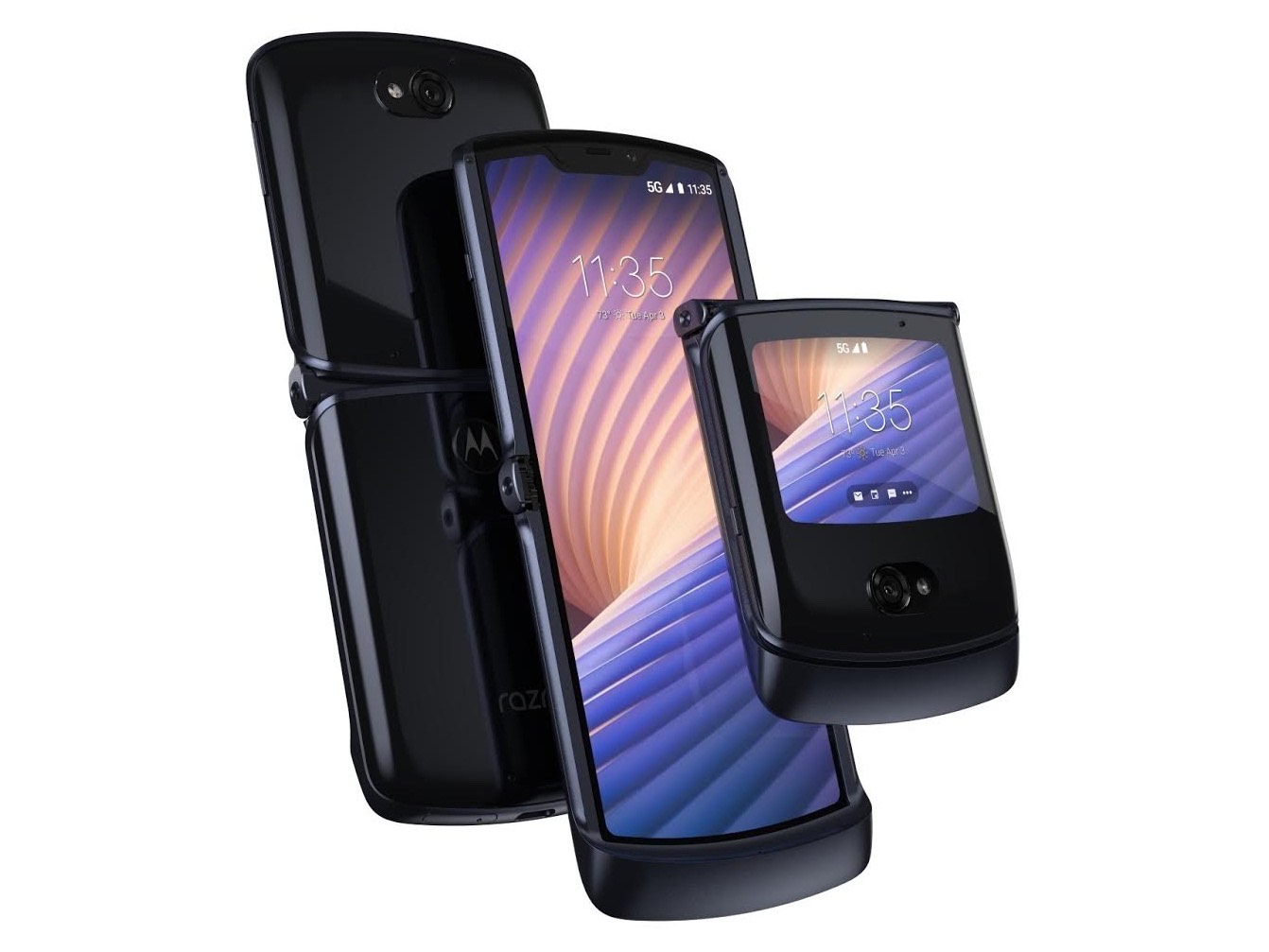
Motorola Razr


With a global score of 57, the Motorola Razr 5G lands in the bottom third of the DXOMARK audio smartphone database, alongside devices such as the Realme X2 Pro and the Sony Xperia 1 II. On playback, the performance was below average overall. On the positive side, it had a fairly extended high-end register and good attack at nominal and soft volumes.
A significant lack of low mids and bass content impairs the timbre performance and also punch, which is perceived as shallow at most volumes. Because the Razr only has one speaker, the spatial performance was subpar. In general, background noise is often more audible than foreground content because of the high-end extension in timbre.
As a recording device, the Razr produced fairly good volume performance. Dynamics performance was above average, with a satisfactory signal-to-noise ratio (SNR) when recording in loud environments. On the negative side, the timbre performance was below average, with aggressive trebles and inconsistent midrange. The device produced a number of artifacts, with strong distortions and pumping effects, especially in recordings registered in high sound pressure level (SPL) environments.
Sub-scores explained
The DXOMARK Audio overall score of 57 for the Motorola Razr is derived from its Playback and Recording scores and their respective sub-scores. In this section, we’ll take a closer look at these audio quality sub-scores and explain what they mean for the user.
Playback

Timbre
Motorola Razr
60
89
Timbre tests measure how well a phone reproduces sound across the audible tonal range and takes into account bass, midrange, treble, tonal balance, and volume dependency.
The Motorola Razr was below average in its timbre performance. Despite demonstrating clear treble and high-end extensions, the tonal balance was heavily hindered by the lack of low-end content at all volumes. Midrange is impaired by a lack of low mids and tends to sound nasal. You can see that lack of bass and other low-end content in the chart below.

Dynamics
Motorola Razr
66
81
DXOMARK’s dynamics tests measure how well a device reproduces the energy level of a sound source, and how precisely it reproduces bass frequencies.
Dynamics were a bright spot for the Motorola Razr. Despite the disadvantages of having only one speaker, the device shows impressive punch on certain tracks, although overall it was below average in this attribute. At low and nominal volumes, the Razr performs well in attack. At higher volumes, dynamics are impaired by limiting, which has an impact on the envelope. Due to its lack of bass and low-mid content, the device has generally weak punch.
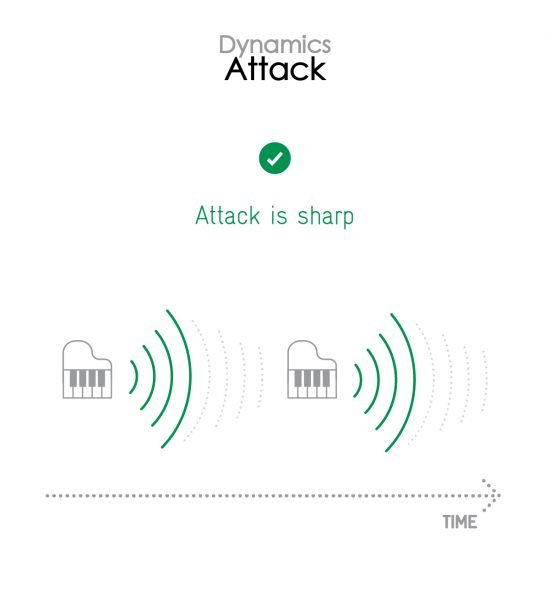
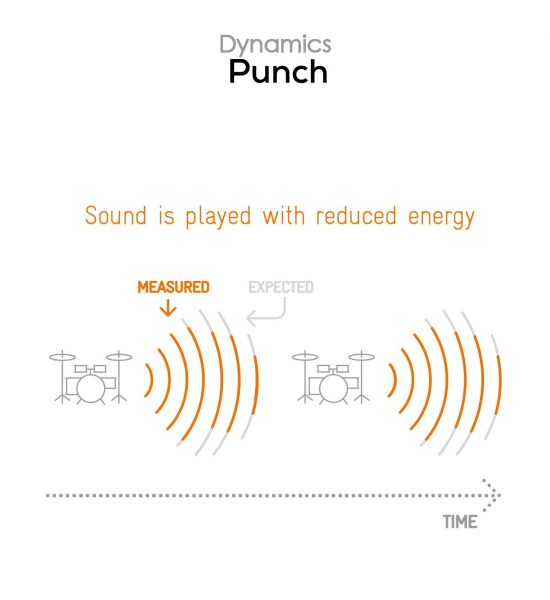

Spatial
Motorola Razr
32
88
The sub-attributes for perceptual spatial tests include localizability, balance, distance, and wideness.
With only one speaker, the Razr was disadvantaged in the spatial attribute. With that speaker positioned at the bottom-right of the device when held in portrait mode, balance and wideness were also compromised. Localizability was decent, and distance was acceptable but hindered by the lack of low mids.

Volume
Motorola Razr
52
91
Volume tests measure both the overall loudness a device is able to reproduce and how smoothly volume increases and decreases based on user input.
In volume testing, the Motorola Razr produced a decent showing. That said, loudness is poor at maximum volume, dynamic content such as classical music is difficult to hear properly and at minimum volume.
| Hip-Hop | Classical |
| 66.9 dBA | 64.1 dBA |

Artifacts
Motorola Razr
91
113
Artifacts tests measure how much source audio is distorted when played back through a device’s speakers. Distortion can occur both because of sound processing in the device and because of the quality of the speakers.
The Razr held its own in the artifacts attribute, with a score that puts it in good company. Our engineers noted few artifacts overall; they did, however, perceive distortions at maximum volume. Moreover, some noise is generally audible because of the high-end extension and trebles, which make the background sometimes too present.
Recording

Timbre
Motorola Razr
58
91
As a recording device, the Motorola Razr 5G had a below-average performance in timbre. Tonal balance shows good high-end extension, but aggressive treble produces a metallic sound, and together with the inconsistent midrange, makes voices sound unpleasant. In the memo app, voices end up sounding nasal, with a lack of clarity and low mids.
At high SPL, an aggressive high-end and high mids impair the timbre overall, inducing distortion and saturation. Furthermore, a strong lack of bass and low mids is noticeable.

Dynamics
Motorola Razr
62
81
The Razr was above average in dynamics. When recording in loud environments, the noise-cancelling algorithm performs well, allowing for a satisfactory SNR in both selfie and life videos. When recording in quiet scenarios (like at home), resonances on treble elevate the background, thus impacting the SNR. Inconsistent midrange in all tested recordings makes plosives imprecise.
At high SPL, the sound envelope is hindered by an excess of distortions and saturation during the entire recording.

Spatial
Motorola Razr
49
78
The Motorola Razr 5G produced below-average results when trying to capture a sense of space in the audio scene. Localizability was impaired in all use cases; the audio scene was not precise, and sound sources seemed to be slightly shifting positions. Some directivity was noticeable in videos recorded with the rear camera, although that was not the case when recording with the selfie camera. Wideness performance was not up to par — voices were perceived to be coming from the right. The unnatural voice timbre affects distance perception.
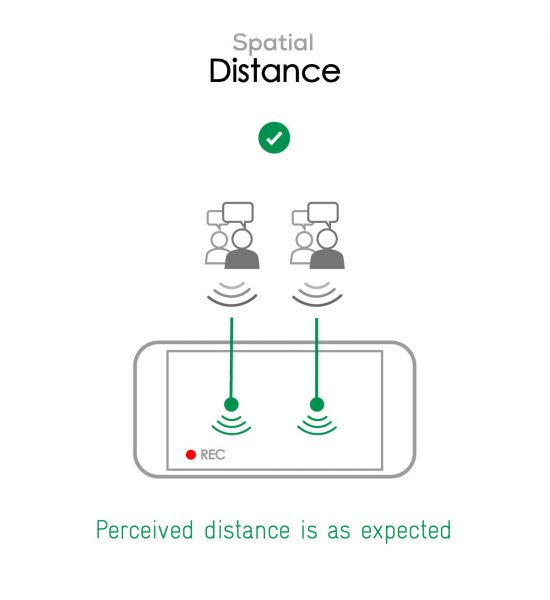
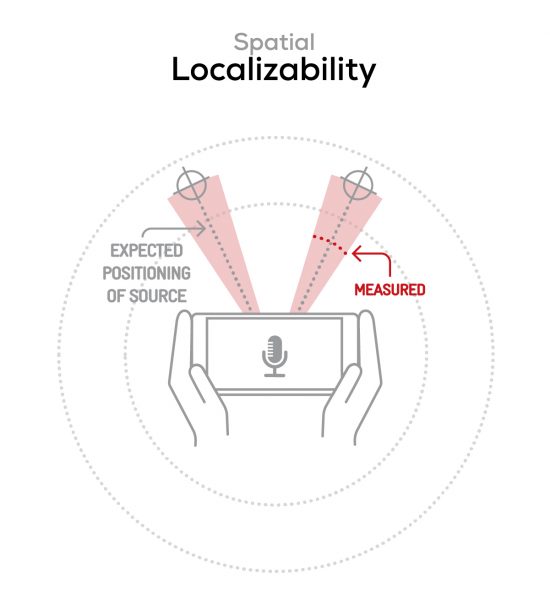

Volume
Motorola Razr
63
99
The Motorola Razr performed fairly well in recording volume, at least in most respects. In a loud environment, life video recordings were very quiet, while on selfie video they had quite good loudness. In indoor and outdoor use-case scenarios, the memo app did a good job of capturing a correct level of loudness, but it was very low in selfie and life videos.
Here are our test results, measured in LUFS (Loudness Unit Full Scale):
| Meeting | Life Video | Selfie Video | Memo |
| -30.2 LUFS | -21.3 LUFS | -19.8 LUFS | -22.3 LUFS |

Artifacts
Motorola Razr
52
97
The artifacts performance of the Razr was below average. There was strong pumping and distortion on shouting voices. Oftentimes the noise cancellation function was triggered after a delay, producing an unnatural change in volume. At high SPL, treble was strongly distorted, and saturation and pumping affected overall performance.
See if you can detect the artifacts in this sample recording:

Background
Motorola Razr
31
60
The Motorola device’s background performance was limited, with unsatisfactory timbre in all use cases. When recording in loud environments, the background lacked bass and low mids. Resonances on high mids reduce the naturalness of the background. Our testers also noticed directivity in the background when recording life videos.
When recording in quiet environments, resonances on treble make the background sound tinny.
Conclusion
With only one speaker, and configured the way it is, the Razr 5G is not in the same class as the top non-folding flagships in the audio field. In playback, the phone has good attack at soft and nominal volumes and a good high-end register. But the lack of bass and low mids really hurt timbre performance. With only one speaker, the device was also weak in the spatial attribute, given its single speaker.
As a recording device, the Razr’s volume and dynamics performances were decent, but the timbre was not great, with aggressive trebles and inconsistent midrange. The artifacts performance was subpar as well, with strong distortions and pumping, especially in high SPL environments.
Playback
Pros
- Extended high-end register
- Good attack at soft and minimum volumes
Cons
- Lack of bass and low-end content hurts timbre
- Having only one speaker throws off spatial performance
Recording
Pros
- Good volume performance
- Above-average dynamics
- Satisfactory SNR when recording in loud environments
Cons
- Strong distortions at high SPL
- Aggressive treble produces metallic sound
- Subpar control of artifacts


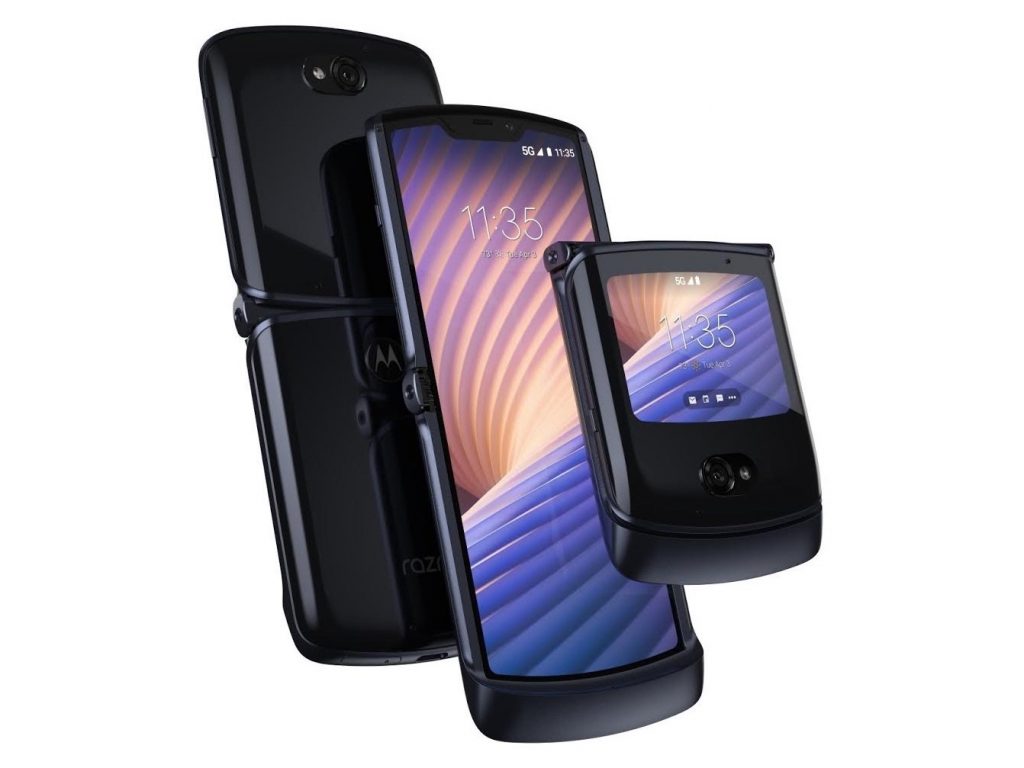


DXOMARK encourages its readers to share comments on the articles. To read or post comments, Disqus cookies are required. Change your Cookies Preferences and read more about our Comment Policy.